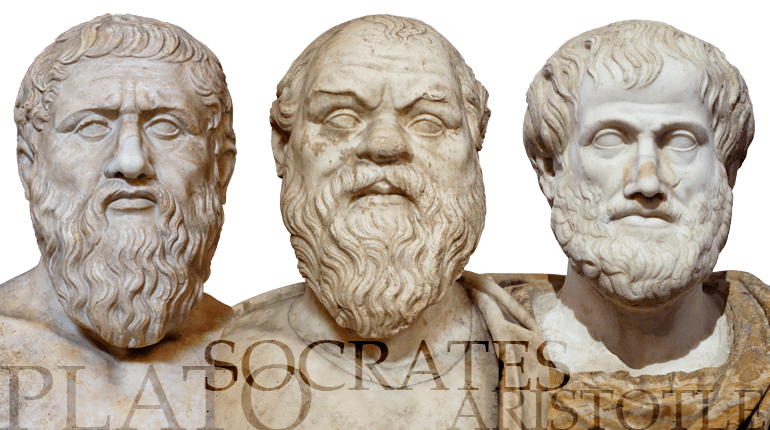Socrates, Plato, and Aristotle: A Comparative Study
The foundations of Western philosophy are deeply rooted in the teachings of three monumental figures: Socrates, Plato, and Aristotle. These ancient Greek philosophers, often referred to as the "Big Three," are essential to any serious study of philosophy. Let's explore their key ideas, similarities, and differences.
Socrates: Athens’ Street-Corner Philosopher
Socrates, the original "street philosopher," was known for wandering the streets of Athens, engaging citizens in deep, thought-provoking conversations. Despite being accused of corrupting the youth and disrespecting the gods, his real offense was challenging powerful individuals with his relentless questioning. His refusal to stop practicing philosophy led to his infamous death sentence.
Famous quote: “The unexamined life is not worth living.”
Teaching method: Socratic Method – a technique of asking pointed questions to stimulate critical thinking and expose contradictions.
Legacy: Socrates left no written works; his ideas were preserved by his students, including Plato.
Plato: The Philosopher Who Dreamed of Kingship
Born into an aristocratic Athenian family, Plato was not only a philosopher but also a champion wrestler. His real name was Aristocles, but his broad shoulders earned him the nickname "Plato."
Plato was deeply influenced by Socrates, writing dialogues that immortalized his teacher's dialectical style. He believed in the immortality of the soul and the existence of an eternal realm of Forms or Ideals, such as Justice, Beauty, and Equality.
Key work: The Republic – Plato’s vision of an ideal society, governed by philosopher-kings.
Philosophy: He saw the physical world as a shadow of a higher, more perfect reality – the world of Forms.
Influence: Plato laid the groundwork for much of Western metaphysical thought, with an emphasis on the importance of ideal truths.
Aristotle: The Pursuit of the Golden Mean
A student of Plato, Aristotle eventually surpassed his mentor in terms of scope and influence. Known for tutoring Alexander the Great, Aristotle founded his own school, the Lyceum, and wrote extensively on a wide range of subjects – from biology and ethics to logic and politics.
Famous idea: The Golden Mean – a principle of moderation, advocating balance between extremes.
Philosophy: Aristotle was more pragmatic and less mystical than Plato, emphasizing empirical observation and rational thought as the path to knowledge.
Legacy: Aristotle is often regarded as the father of logical theory and a pioneer in the scientific method. His emphasis on reason as the highest human function has shaped Western intellectual history.
While Socrates, Plato, and Aristotle shared a dedication to philosophical inquiry, their approaches diverged significantly. Socrates focused on ethics and self-examination, Plato looked to a higher realm of ideal forms, and Aristotle grounded his philosophy in the natural world and human reason. Together, they form the bedrock of Western thought, influencing centuries of philosophical and scientific development.
Watch the full video for a more in-depth exploration of these iconic thinkers and their enduring legacy in philosophy.









